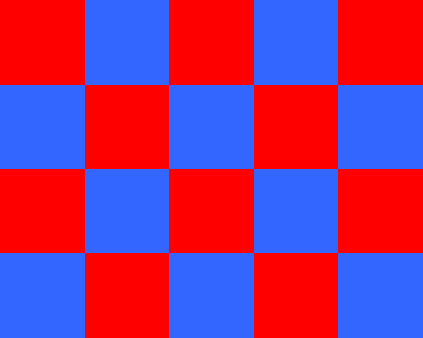Multiplication
Enlarge text Shrink textMultiplication (often denoted by the cross symbol, ×, by the mid-line dot operator, ·, by juxtaposition, or, on computers, by an asterisk, *) is one of the four elementary mathematical operations of arithmetic, with the other ones being addition, subtraction, and division. The result of a multiplication operation is called a product. The multiplication of whole numbers may be thought of as repeated addition; that is, the multiplication of two numbers is equivalent to adding as many copies of one of them, the multiplicand, as the quantity of the other one, the multiplier; both numbers can be referred to as factors. a × b = b + ⋯ + b ⏟ a times . {\displaystyle a\times b=\underbrace {b+\cdots +b} _{a{\text{ times}}}.} For example, the expression 3 × 4 {\displaystyle 3\times 4} , phrased as "3 times 4" or "3 multiplied by 4", can be evaluated by adding 3 copies of 4 together: 3 × 4 = 4 + 4 + 4 = 12. {\displaystyle 3\times 4=4+4+4=12.} Here, 3 (the multiplier) and 4 (the multiplicand) are the factors, and 12 is the product. One of the main properties of multiplication is the commutative property, which states in this case that adding 3 copies of 4 gives the same result as adding 4 copies of 3: 4 × 3 = 3 + 3 + 3 + 3 = 12. {\displaystyle 4\times 3=3+3+3+3=12.} Thus, the designation of multiplier and multiplicand does not affect the result of the multiplication. Systematic generalizations of this basic definition define the multiplication of integers (including negative numbers), rational numbers (fractions), and real numbers. Multiplication can also be visualized as counting objects arranged in a rectangle (for whole numbers) or as finding the area of a rectangle whose sides have some given lengths. The area of a rectangle does not depend on which side is measured first—a consequence of the commutative property. The product of two measurements (or physical quantities) is a new type of measurement (or new quantity), usually with a derived unit of measurement. For example, multiplying the lengths (in meters or feet) of the two sides of a rectangle gives its area (in square meters or square feet). Such a product is the subject of dimensional analysis. The inverse operation of multiplication is division. For example, since 4 multiplied by 3 equals 12, 12 divided by 3 equals 4. Indeed, multiplication by 3, followed by division by 3, yields the original number. The division of a number other than 0 by itself equals 1. Several mathematical concepts expand upon the fundamental idea of multiplication. The product of a sequence, vector multiplication, complex numbers, and matrices are all examples where this can be seen. These more advanced constructs tend to affect the basic properties in their own ways, such as becoming noncommutative in matrices and some forms of vector multiplication or changing the sign of complex numbers.
Read more on Wikipedia >
 Topic
Topic



